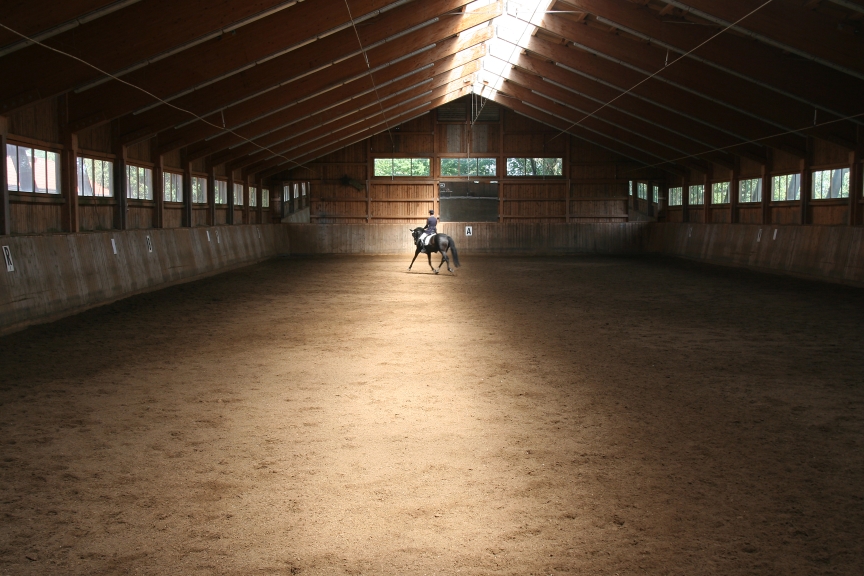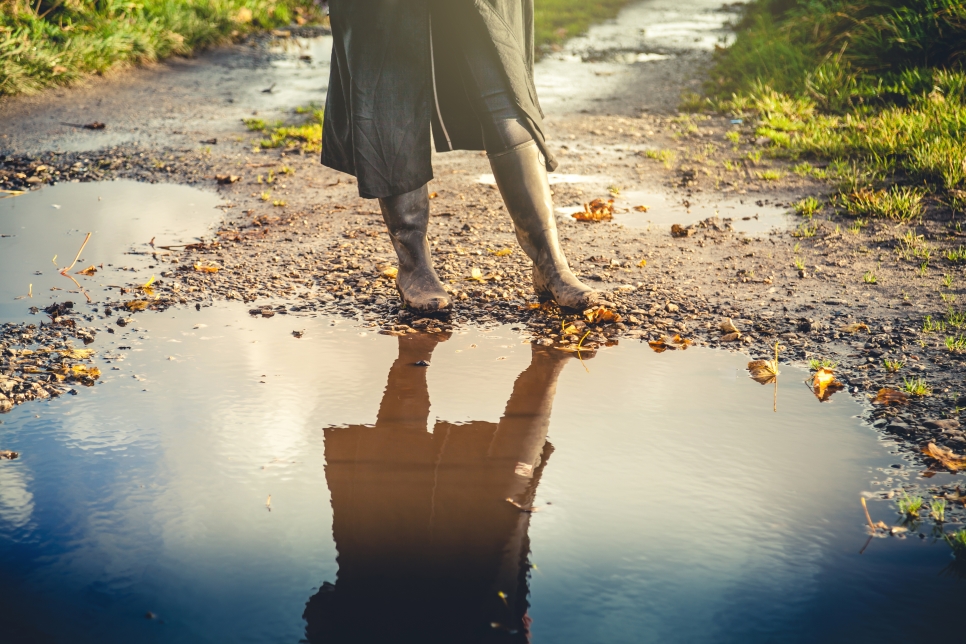Are you an indoors or an outdoors sort of rider? Carolyn Henderson tries to find the advantages in braving the elements.
At this time of year, riders who have unlimited access to indoor schools either keep quiet about it or talk in the tone usually reserved for confessing extravagant indulgences.
The rest of us grit our teeth, mutter about “softies” and feel self-righteous about the fact that riding in the open is mentally stimulating and better for your horse’s respiratory health. The fact that “mentally stimulating” can mean anything from leaves blowing the wrong way provoking a vertical take-off, to your horse and his hacking or schooling buddy orchestrating a spooks pas de deux, is beside the point.

There are times when, living in a part of the world that is the wind’s first stop-off after Siberia, I would give anything for the chance to ride indoors. Anything.
But then a friend who is a professional rider told me, in all truthfulness, that she would never have an indoor school. “If my horses can cope with bad weather when they’re schooling at home, they’ll cope with it in competition,” she pointed out.
Admittedly, she hires a nearby indoor school for a couple of sessions to acclimatise her young horses before the indoor competition season, but that’s part of the same philosophy. Give a horse chance to experience something in a controlled situation, she believes, and he’s more likely to accept the challenges you can’t control.
If you’re an outdoor rider, you don’t trawl internet sites drooling over fitted waistcoats and matchy-matchy combinations. Instead, you sigh over thermal under-breeches, designer waterproofs and gloves claimed to keep your hands warm and dry in every situation. You dream not of cashmere jumpers, but cashmere socks; I’m told, though have never been able to risk the expense of finding out, that they’re the best thing for keeping your toes toasty.
When you look for advice, you skip past the “How to have glowing skin this winter” posts and home in “Keep warm and dry with advice from pro grooms” ones. Instructors who spend all day watching other people ride rather than being able to at least exercise their muscles by doing it themselves are another great source of advice.
This is how I learned to trawl charity shops for ski trousers or salopettes, which are great for yard work in Arctic conditions. It’s amazing what some people will discard – I can only imagine that their ski-ing holiday was so awful, they can’t bear to have any reminders.
It’s often said that horses can tolerate cold, but hate it when it’s cold and wet. Guess what – so do their owners. And why do wellies and waterproof boots, no matter whether they be expensive or cheap and cheerful, always wait until the worst of the weather to spring a leak?

I know logic suggests that you don’t notice the tiny crack in your boot that lets in the water until it actually rains. However, I wouldn’t be surprised if manufacturers incorporated a secret self-destruct mechanism that automatically activates around the beginning of December.
And yet…all it takes is one cold, bright day and you know why riding indoors, however productive it can be, can never match the satisfaction of riding outdoors. Just hold tight if you meet the wrong sort of leaves.

